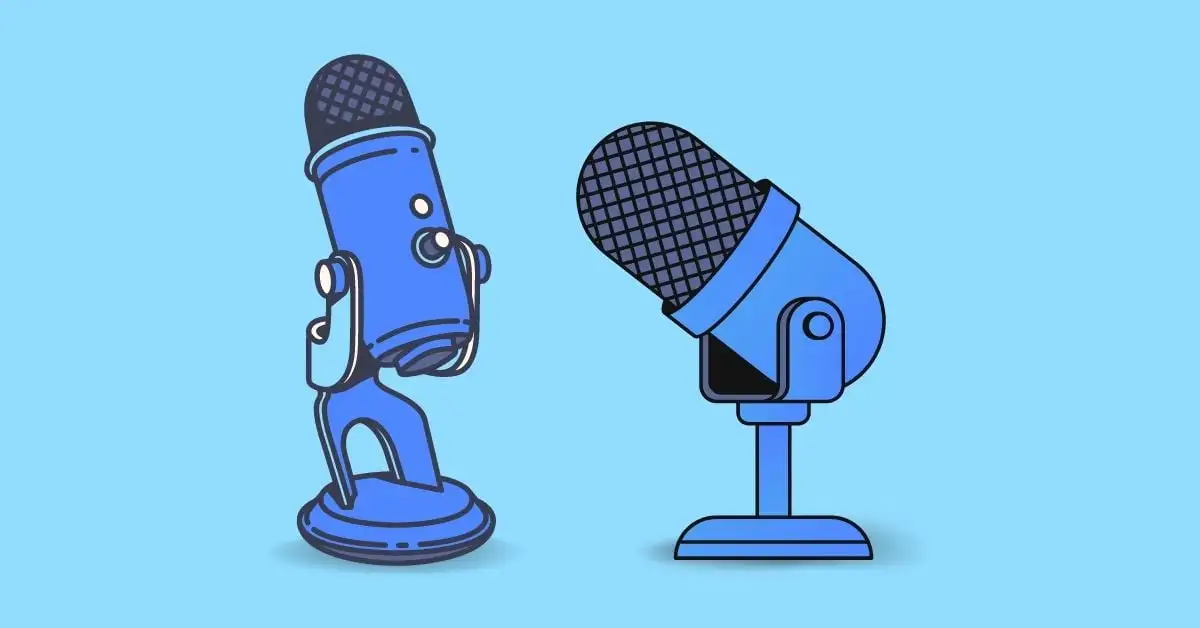Learn about the pros and cons of each type and decide which one is right for you.
We’ve all heard that a good mic is the most important piece of equipment in a Voice over studio. And that’s true! But what kind of mic should you get? Should you go for a condenser or a dynamic mic? Or perhaps a shotgun mic? The answer to that question is actually pretty simple. If you want to make a quality recording, you need to use the right mic. So, which one is right for you? Let’s take a look.
The quality of your voice over work can make or break your entire project. If you want to ensure that your clients receive high quality audio, then you need to make sure that you’re using a professional microphone. In this post, we’ll discuss the pros and cons of the two most popular microphones used for voice over: condenser and dynamic.
Types of Microphones
When it comes to recording audio, there are two different types of microphones: condenser and dynamic. Each has its own pros and cons, so it’s important to know the difference between the two.
Condenser Microphones
A condenser microphone is an audio device that uses a capacitor as a sound-collecting element. The capacitor allows the microphone to collect and store audio signals. Condenser microphones are usually used in professional studios because they are more sensitive than dynamic microphones.
Condenser microphones are generally considered to be the best choice for recording audio. They have the highest quality of sound, and they are typically very easy to use. However, there are some downsides to condenser microphones. One of the downsides is that they tend to be more expensive than dynamic microphones. Another downside is that they are much more sensitive to electromagnetic interference (EMI). If you are using an old microphone, then you might want to consider buying a new one.
Pros of using a Condenser Microphones
Condenser microphones offer several benefits including high quality sound reproduction, low distortion, and a large dynamic range. They can also be used in a variety of applications including stage and studio, field recording, and on-camera.
Cons of using a Condenser Microphones
There are two drawbacks to condenser microphones. The first is that they tend to be very expensive. They can also pick up extraneous sounds like the wind. This makes them a bit less useful in an outdoor environment where you might not want to be surrounded by all kinds of distracting sounds.
Dynamic Microphones
A dynamic microphone is a microphone that uses a microphone diaphragm as a sound-collecting element. A dynamic microphone is not as sensitive as a condenser microphone, but it is generally more sensitive than a shotgun microphone. Dynamic microphones are generally more affordable than condenser microphones, and they are more durable than shotgun microphones.
Dynamic microphones are often used in live performing stages because they are less sensitive than condenser mics, yet they are more effective at isolating background noise from the voice.
Dynamic microphones are generally considered to be affordable and durable than condenser microphones. But there are some downsides to using a dynamic microphone.
Pros of using a Dynamic Microphones
There are several benefits to using dynamic microphones, including they are less expensive than other types of microphones and have greater range. They are also much easier to operate and are much quieter. Dynamic microphones are also much smaller than condenser microphones, which makes them much easier to use in a variety of situations.
Cons of using a Dynamic Microphones
The biggest drawback to using dynamic microphones is that they are not very sensitive. This means that they are not very good at picking up sounds that are very quiet or that are very far away. If you want to be able to pick up sounds from a great distance or record low-volume sounds, you will need to use a condenser microphone.
How to Choose the Best Microphone for Voice Over
When it comes to getting a good quality voice over, it’s not just about the microphone. In fact, Your recording space can answer the question, Is your recording space acoustically treated? If yes, then you should definitely go with a condenser microphone.
Otherwise, A dynamic microphone will do a better job at isolating the unwanted noise in your recording.
Conclusion on Condenser or Dynamic Microphone for voice over recording
In conclusion, the condenser microphone is the most popular choice for voice over. It’s also the most expensive. But going with a condenser in untreated space would be a bad call as it will pick up everything and you’ll have to deal with a lot of unwanted noise.
A dynamic is a good start for untreated spaces, once you do a proper acoustical treatment. You’ll definitely have to upgrade to a condenser mic.

Leave a Reply